Handbreads, Apas
The East Indian handbreads are made with rice flour. Traditionally, the rice flour is cooked twice, first in hot water called khoi then as the laden bread itself. Today I share with you the authentic East Indian apas.

I first learned to make handbreads when I was 10 from my mom’s sister, Bai. She was old school and used to say if you don’t learn to make handbreads no nice boy will marry you! Of course, I never married an East Indian and my husband has no clue why these apas are such a big deal.
Now, if you have tried to make these apas and failed before then know this, it’s not you. Blame it on the rice flour.
Let me explain – you see, rice flour has no gluten which is why making bread with it is not so easy. No gluten means it breaks easily. It also becomes dry very easily so it needs to be hydrated all the time.
Below I have given you a detailed recipe and instructions but I also have progress pictures for you.

Step by step instructions
Dough / Khoi
- In a large pot over medium heat bring the water, salt, and oil to a boil. As soon as it starts to boil add the rice flour and combine well.
Pro tip – keep the heat to medium or low as we do not want to burn the flour. - Continue to stir and cook on medium heat for about a minute. Then, turn the heat off and cover the pot. Leave to cook in the residue heat for 3 minutes.
Pro tip – leaving it to cook in the residue heat will soften the rice flour and make softer handbreads.
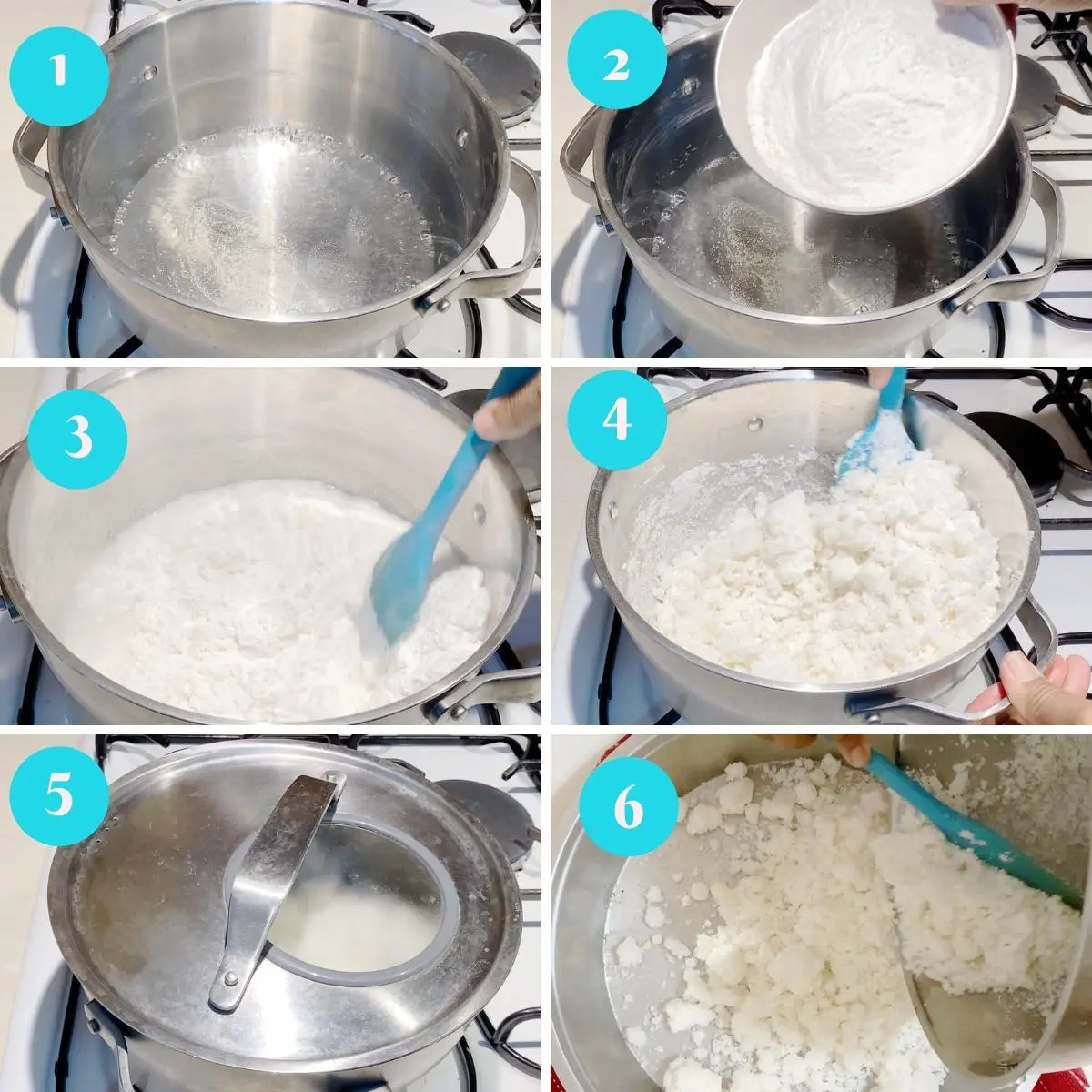
- Pour the crumbly dough into a tray/ thala or work surface. While the dough is still warm bring it all into a ball. Dip your hands in water and knead until you have a smooth pliable dough.
Pro tip – you do not need to burn your hands so don’t make haste to knead it while it is hot. It is ok to leave it to cool until warm.
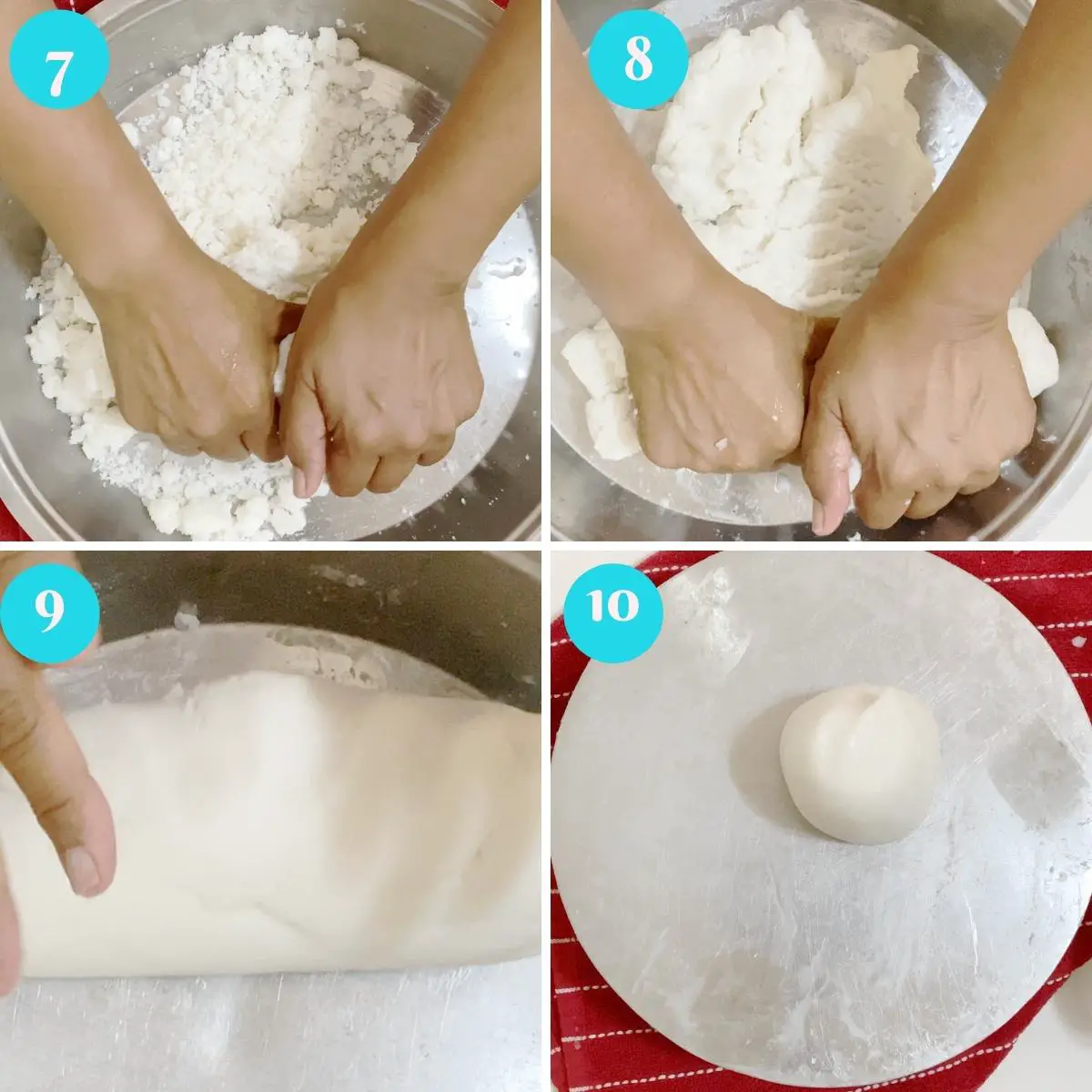
Handbreads
- Divide the dough into 6 large (12-inches)) or 8 small balls (8-inches)
Pro tip – if you are new to making apas then I suggest making smaller sizes as they are easier to handle. - Handbreads are made on a flat surface made of wood or metal called kolpat. You can also of course make them on a clean flat table counter.
- To make the apas or hand bread-
- Knead the dough ball well with water until it is smooth.
- Press down with the ball of your palms in a circular motion.
- Lift the apas up with the left hand, dip the right hand in the water and smear the work surface with water.
- Turn the apas into your hand and place it back on the surface. Pressing down with the fingers to spread and increase in size. Use your fingertips to smooth the edges-
- Continue to lift, turn, and spread some more until you have the desired size.
- Pro tip – the surface must always be wet otherwise the apas will stick and tear when you peel them off.
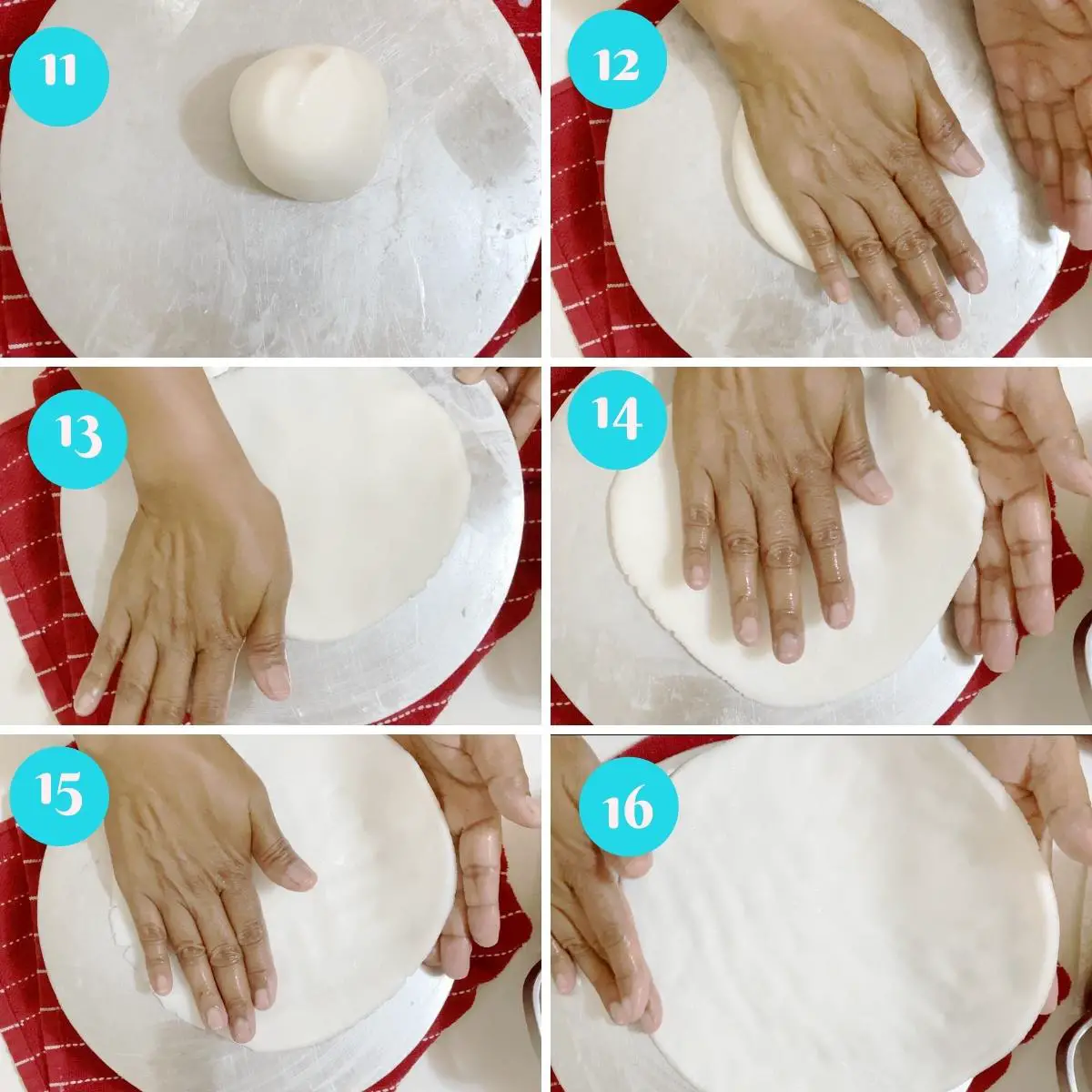
- When you reach the desired size, place the apas on a clean kitchen cloth or cheesecloth. Traditionally, they were placed on a soop which basketweave tray.
Pro tip – do not use parchment paper or put them directly on the counter as they tend to stick.
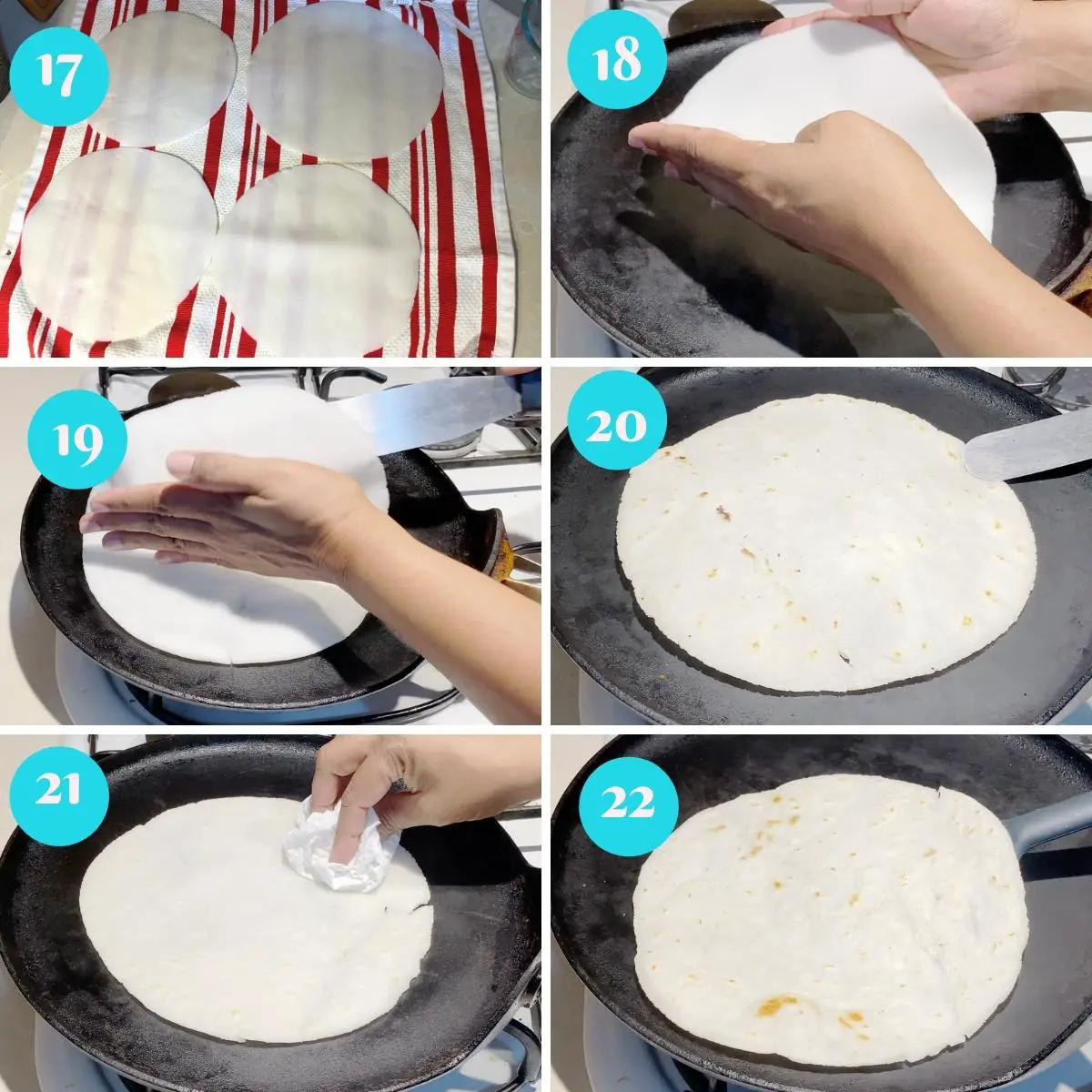
Cook /Tava
- Heat a skillet on medium-high heat. Cook each hand bread on the hot skillet for three to four minutes each.
Pro tip – Apas or hand bread are cooked on a tava but a skillet or non-stick frying pan works just as well. - The right method to cook the hand bread is
- Place it on the hot tava. Wait for a minute then flip it making sure to support it will with the palm of your hand. If you find the hand bread is not lifting from the skillet do not force it as it will break. It needs more time.
- Let cook on the other side for two full minutes. You will see a few dark specks. This time it should be easy to pick it up.
- Flip it back to the first side. Let cook a minute more, then, use a clean kitchen cloth or paper towel to gently press down on the bread to encourage it to puff.
- Once puffed (about a minute more) you can take it off the heat
Pro tip – if the apas are not made evenly or if there are a few cracks they won’t puff. But, don’t worry they will puff over time with practice.
- Place the handbreads for 10 minutes under a clean kitchen cloth to keep them soft. Then transfer them to a roti dish or apas container.
Pro tip- the steam in the hot bread will cool in the bread keeping it soft so don’t skip this step.

Tips when making handbreads
- Making the khoi softens the rice flour so make sure to cook it for at least 3 minutes.
- Rice flour uses a lot of water to soften the dough but keep to the quantity in the recipe. Too little water means the dough breaks easily and too much water will make the dough too soft and weak.
- When kneading the dough, dip your hands in water or it becomes too sticky.
- Traditonally, handbreads were made and cooked simultaneuly but if you are new to making these apas do not multitask. Make the breads first then cook them.
- Handbreads can be made and kept in the fridge before baking so they are fresh at the time of serving.
Frequently asked questions
Handbreads are best the day they are freshly made. But, leftovers can be kept for up to two days. Make sure to wrap them well so they do not dry out when storing.
I wrap the bread in a damp paper towel and place it in the microwave for 30 seconds to a minute. The steam created by the damp paper towel refreshes the handbreads just like freshly made. Try it!
Apas are traditionally made with only rice flour but you can certainly substitute some of the rice flour with whole wheat flour for stability.
This is bread, and can be eaten with any meal from breakfast to dinner. My grandmom had leftover curry and stale handbread for breakfast as well as with her meal for lunch or dinner.
The traditional method does take some practice. However, do not throw away the dough even if you cant’ make them by hand. Instead, you can roll the dough on a lightly floured surface with a rolling pin. Then cook them on a skillet just like we do chapati or naan.

Troubleshooting
- My handbreads are breaking – the dough must be soft and well kneaded. The most common issue with breaking is that the dough is still not well hydrated and kneaded.
- My apas are too thick? – the traditional handbreads are not very thick. In fact, they say you should be thin enoiugh so you are able to see the print of the tablecloth you placed them on. But, dont’ worry this needs practice.
- The handbread are sticking to the skillet – usually this happends when you do not give them enough time to cook on the first side. Rice flour is delicate but letting it cook will add some stablility.
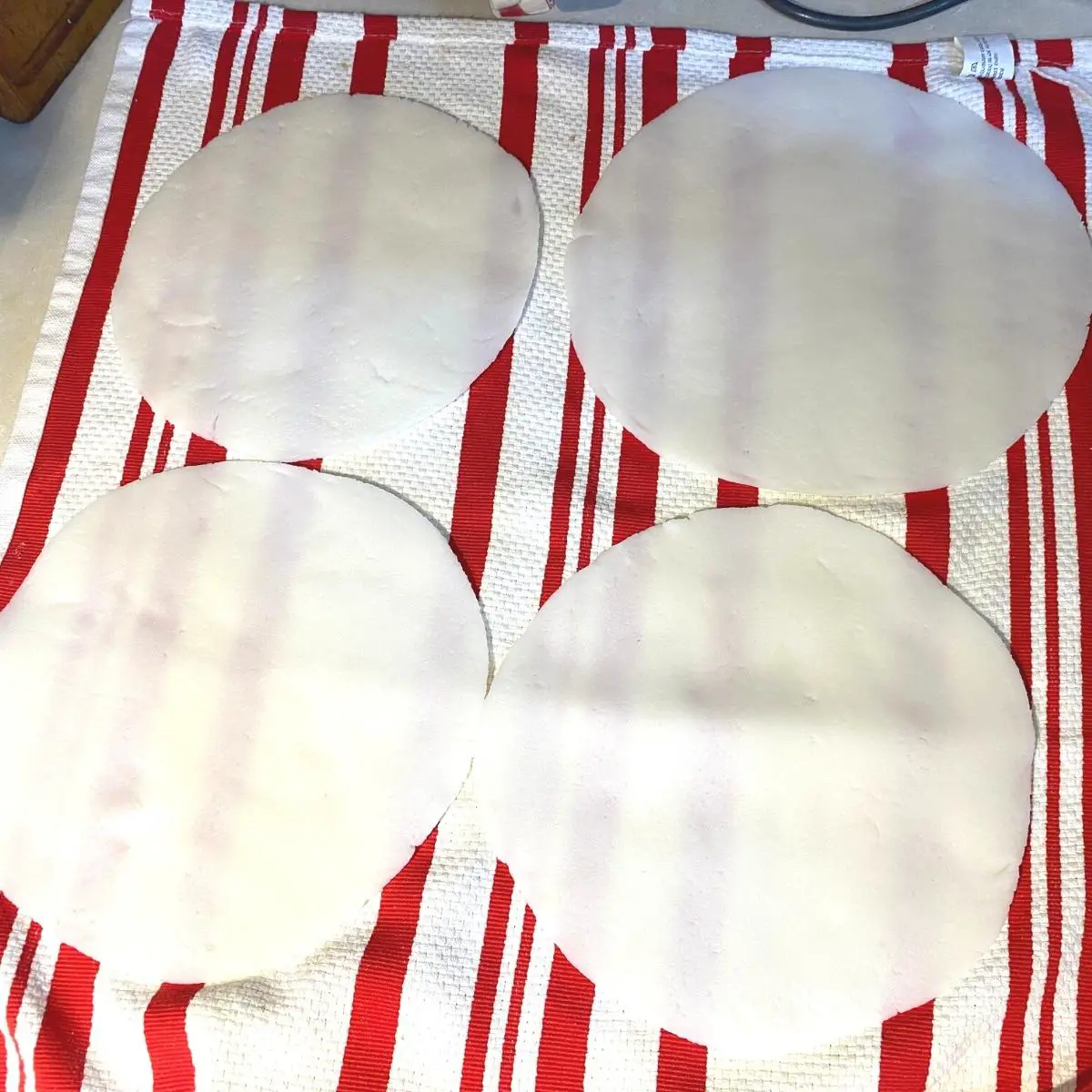
Pin this and other East-Indian Recipes on Pinterest here. Don’t forget to like and Follow for more recipes.
Ingredients
- 1½ cups (355 ml) Water
- 2½ cups (400 g) Rice flour
- ½ tsp Salt
- 1 tbsp Cooking oil
Plus
- 1 cup (236 ml) Water for kneading
Instructions
Dough / Khoi
- In a large pot over medium heat bring the water, salt, and oil to a boil. As soon as it starts to boil add the rice flour and combine well. Pro tip – keep the heat to medium or low as we do not want to burn the flour.
- Continue to stir and cook on medium heat for about a minute. Then, turn the heat off and cover the pot. Leave to cook in the residue heat for 3 minutes.Pro tip – leaving it to cook in the residue heat will soften the rice flour and make softer handbreads.
- Pour the crumbly dough into a tray/ thala or work surface. While the dough is still warm bring it all into a ball. Dip your hands in water and knead until you have a smooth pliable dough. Pro tip – you do not need to burn your hands so don't make haste to knead it while it is hot. It is ok to leave it to cool until warm.
Handbreads
- Divide the dough into 6 large (12-inches)) or 8 small balls (8-inches) Pro tip – if you are new to making apas then I suggest making smaller sizes as they are easier to handle.
- Handbreads are made on a flat surface made of wood or metal called kolpat. You can also of course make them on a clean flat table counter.
- To make the apas or hand bread– Knead the dough ball well with water until it is smooth. – Press down with the ball of your palms in a circular motion. – Lift the apas up with the left hand, dip the right hand in the water and smear the work surface with water. – Turn the apas into your hand and place it back on the surface. Pressing down with the fingers to spread and increase in size. Use your fingertips to smooth the edges – Continue to lift, turn, and spread some more until you have the desired size.Pro tip – the surface must always be wet otherwise the apas will stick and tear when you peel them off.
- When you reach the desired size, place the apas on a clean kitchen cloth or cheesecloth. Traditionally, they were placed on a soop which basketweave tray. Pro tip – do not use parchment paper or put them directly on the counter as they tend to stick.
Cook /Tava
- The right method to cook the hand bread is – – Place it on the hot tava. Wait for a minute then flip it making sure to support it will with the palm of your hand. If you find the hand bread is not lifting from the skillet do not force it as it will break. It needs more time. – Let cook on the other side for two full minutes. You will see a few dark specks. This time it should be easy to pick it up. – Flip it back to the first side. Let cook a minute more, then, use a clean kitchen cloth or paper towel to gently press down on the bread to encourage it to puff. – Once puffed (about a minute more) you can take it off the heatPro tip – if the apas are not made evenly or if there are a few cracks they won't puff. But, don't worry they will puff over time with practice.
- Place the handbreads for 10 minutes under a clean kitchen cloth to keep them soft. Then transfer them to a roti dish or apas container. Pro tip- the steam in the hot bread will cool in the bread keeping it soft so don't skip this step.
About Videos – most recipes has two videos – a quick version in the post & longer detailed version on this recipe card. Please do subscribe to my channel if you like my videos
Nutrition Information
The nutrition information and metric conversion are calculated automatically. I cannot guarantee its accuracy. If this data is important to you please verify with your trusted nutrition calculator. Thank you
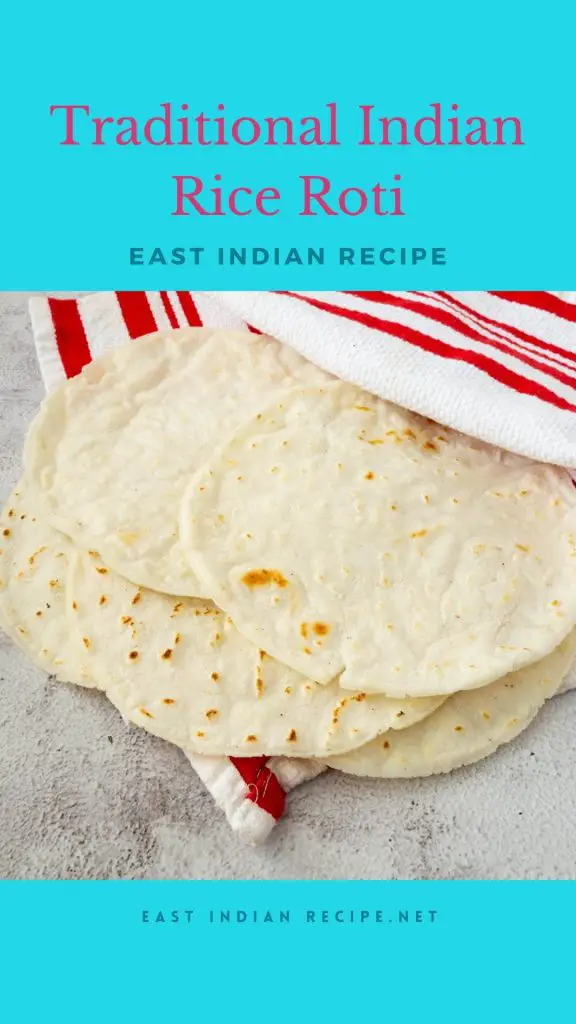


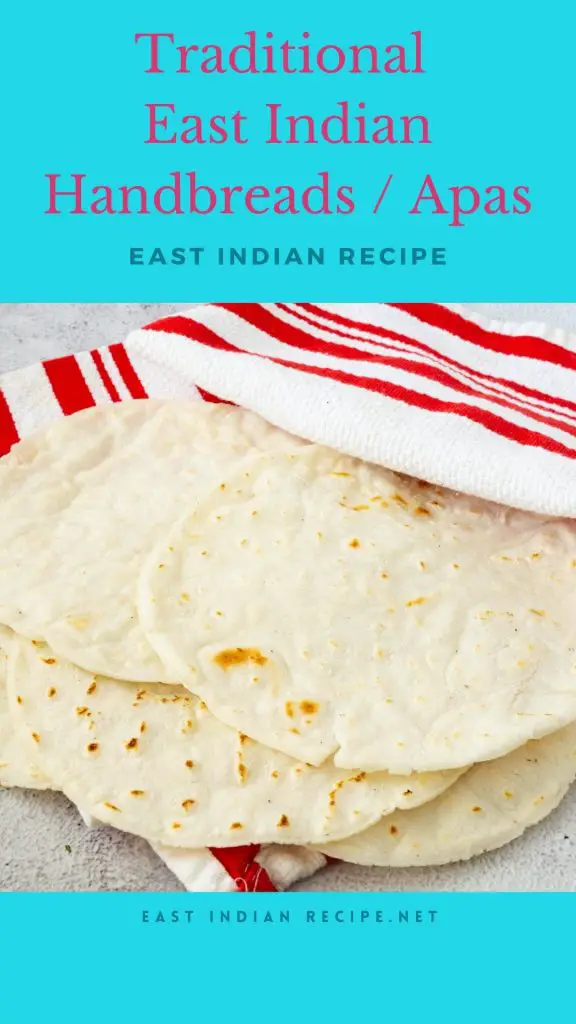
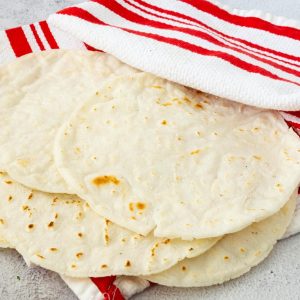
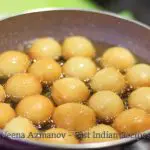
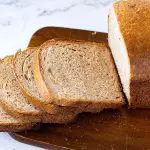
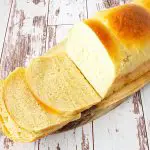
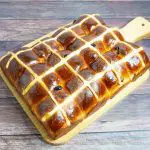

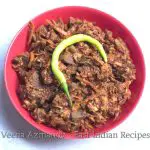


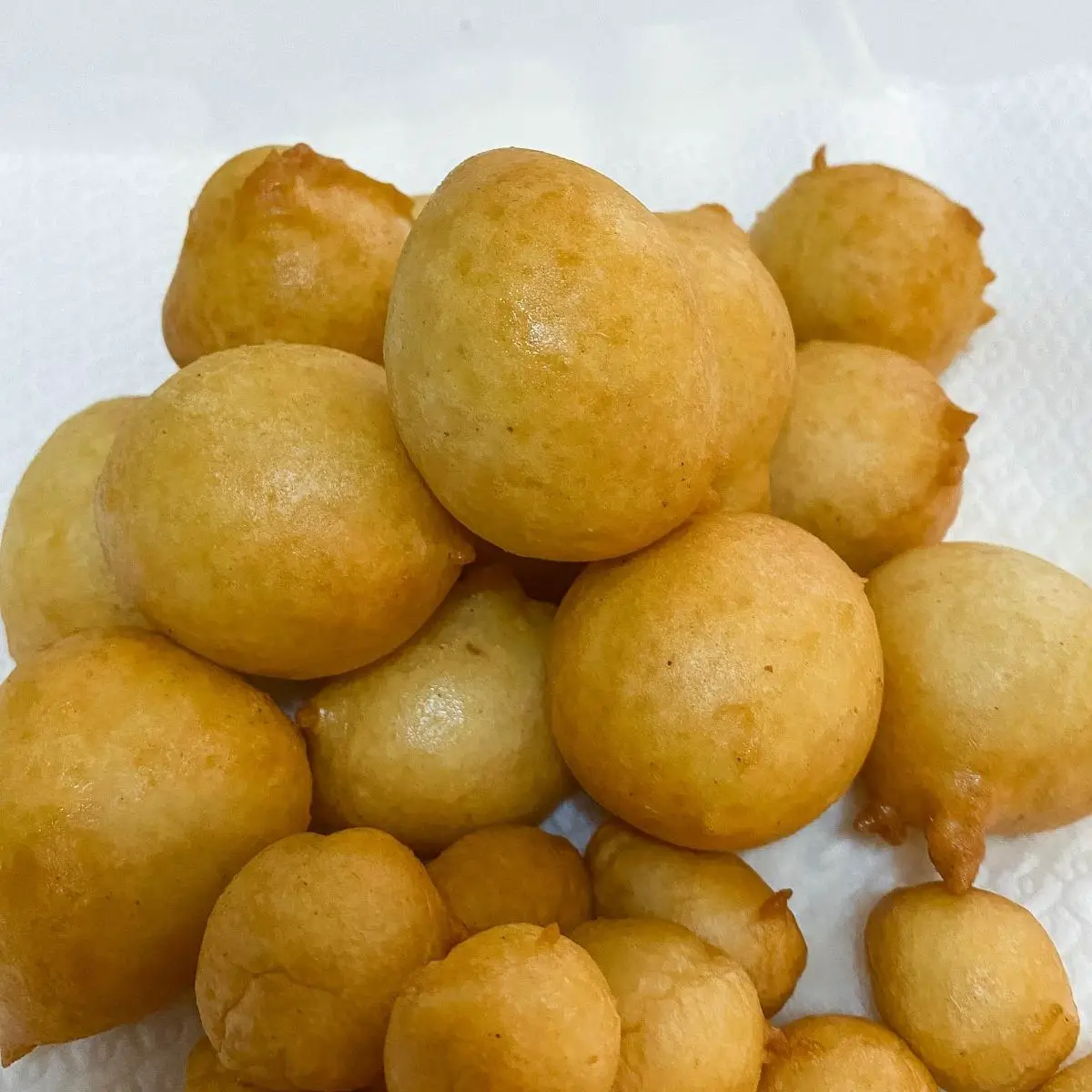
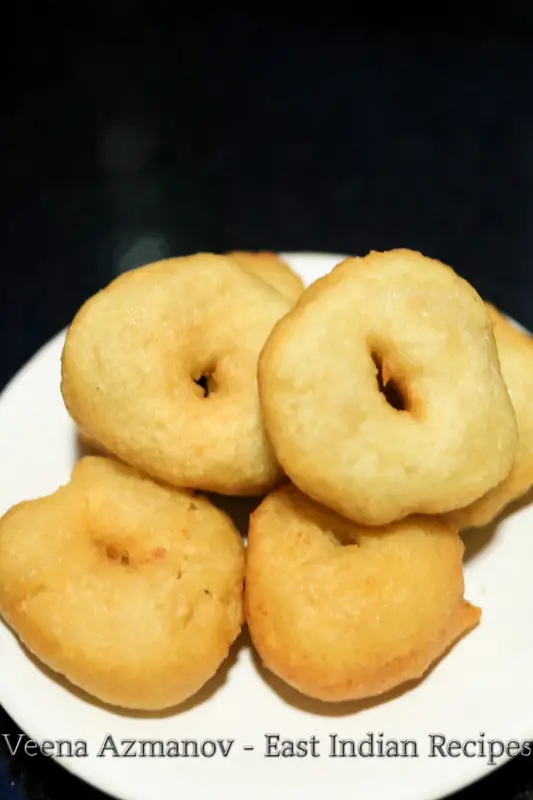
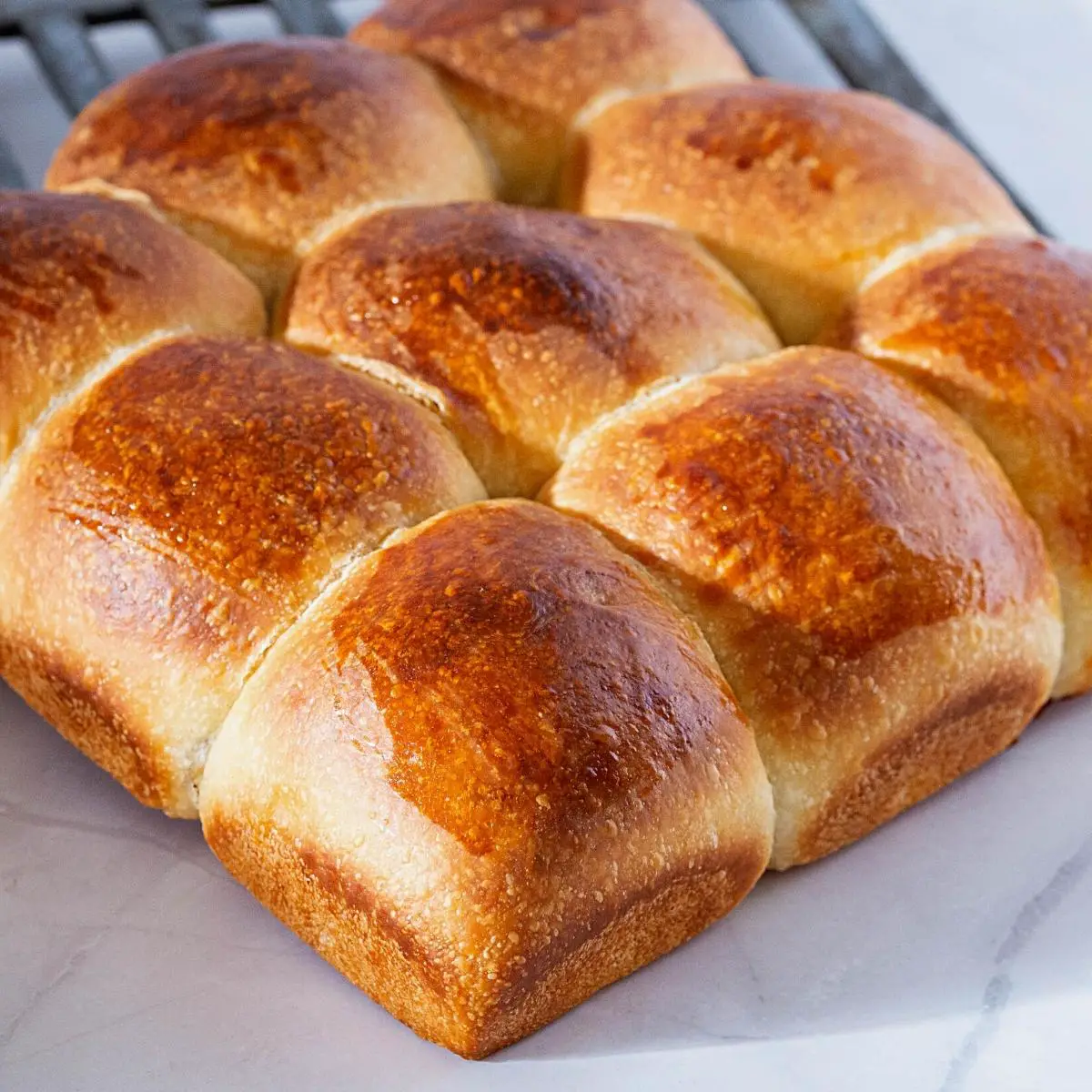

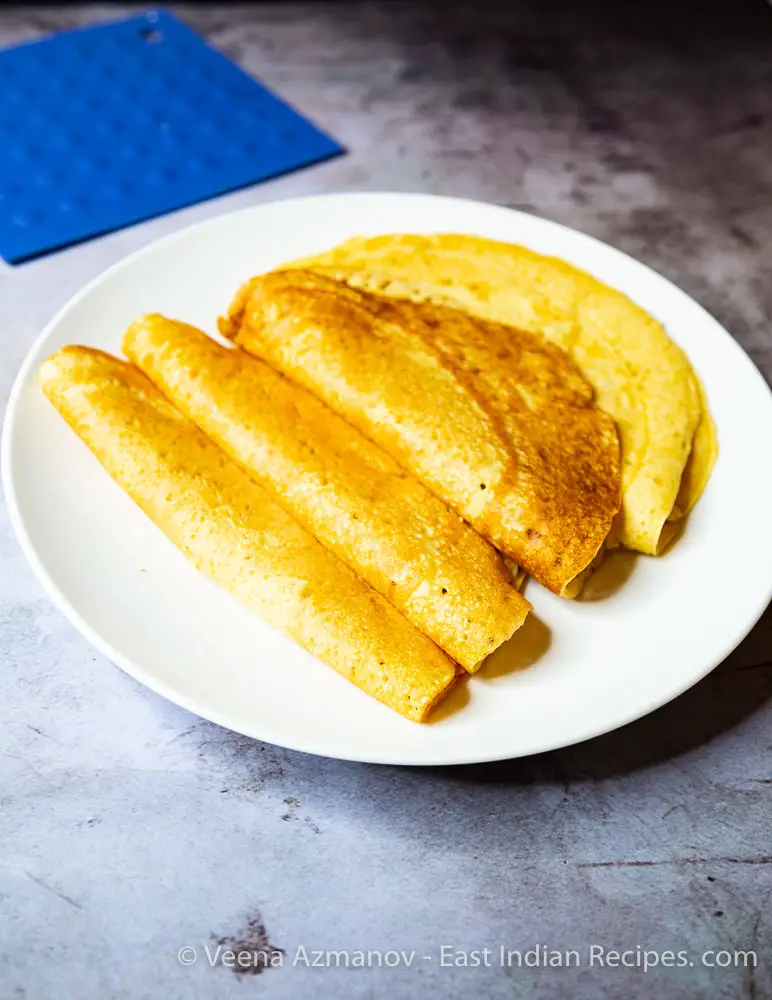
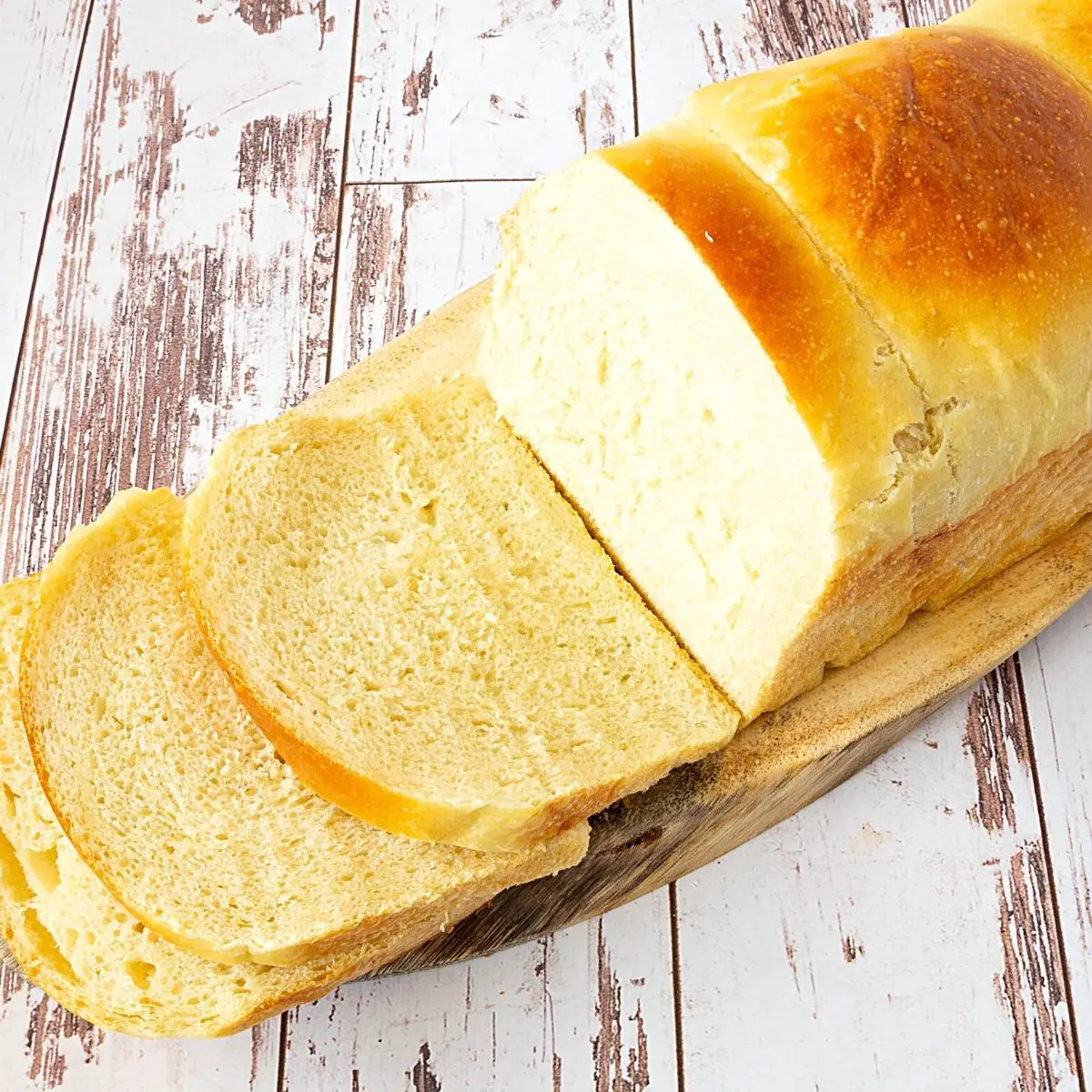

Hi Veena, your recipes are so authentic. I have been cooking East Indian food for a long time, Khudi is a favourite. My mum actually adds ginger and sesame seeds to the recipe. I try to keep it to the ingrediants mentioned in the East Indian cookery book. Love your blog.
Thank you so much, Dorelle. Appreciate the lovely comment. Mutton khudi is my kid’s favorite too.